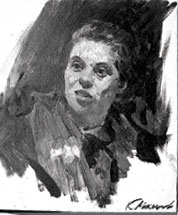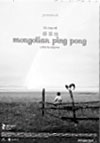Reviews
Art
Russia to the Max
Russian artist Konstantin Mefodyevich Maximov (1913-93) had a great influence on China's oil painting history, as he taught at the Central Academy of Fine Arts from 1955 to 1957. All 21 students under his direction have become major artists, including Jin Shangyi, Zhan Jianjun and Hou Yimin. To mark the 50th anniversary of his teaching in China, the Central Academy of Fine Arts and Russian Art Gallery hold an exhibition of 30 works by Maximov and 20 works by 15 other Russian artists at the gallery from May 28 to 31.
All works are provided by Chinese private collectors and are estimated at 80 million yuan ($10.40 million). Doctor Zhou Bo from the academy will talk about Maximov with his students and critics on Russian arts on the afternoon of May 28.
Maximov also helped the academy establish teaching programs of oil painting and develop the Oil Painting Department. He created many works in China and some were developed with his students.
Chen Jie
Book
Souls and Tombs
The 13 royal tombs of the Ming Dynasty (1368 to 1644) have always been a mystery, attracting people who are interested in the legends of emperors and the imperial family. In Souls and Tombs, illustrator Yang Zi leads us to explore those mysterious stories in a different style, which combines odd and somewhat fearful paintings and a narration from a lingering ghost of a young girl.
The trip reveals different genres of tombs created over 240 years, all of which generate a chilling atmosphere inside and sparkle awe upon the admirers. On the preface, the author tries to say that souls and ghosts also have emotions and sensory pleasure.
Illustrated with bold paintings that combine various artistic trends, the book can be an engaging companion on a brief trip to the ancient country's capital.
Wen Jiao
DVD
Mongolian Pingpong
Directed by Ning Hao
Crazy Stone brought Ning Hao surprising fame, and it also revived his first feature, which seems to be a loose adaptation of The Cup, a Bhutanese movie about some Tibetan kids who go to great lengths to watch a television broadcast of the World Cup football game.
Set in Inner Mongolia, Ning's version focuses on a few prepubescent boys who stumbled upon a pingpong ball. Not knowing what it is, they catch a snippet of a voice-over from an unreliable television transmission that it is "China's national ball". Thinking it is a national treasure, they set about trekking to Beijing to return it.
The movie features breathtaking scenery and vivid descriptions of the ethnic life. The actors are all untrained and there is not a trace of forced delivery in their body gestures or dialogue.
The downside is that there is not much of a dramatic arc. But seen as a travelogue, it can still enthrall.
Raymond Zhou
(China Daily 05/25/2007 page20)














